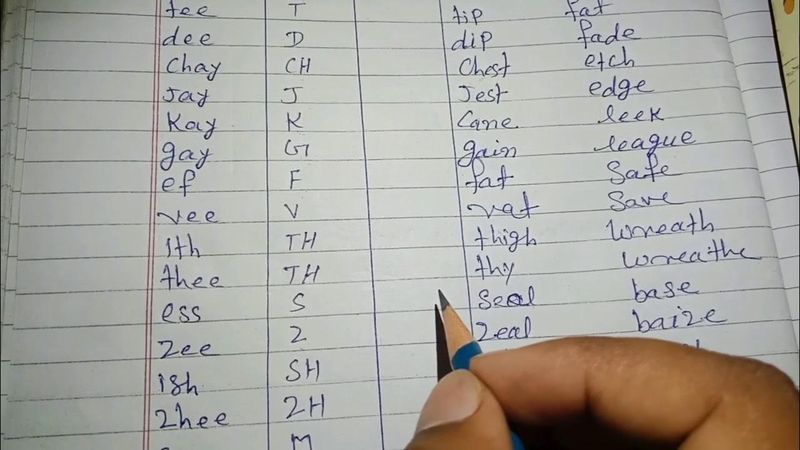In today’s rapidly evolving world, many life skills that were once second nature are now at risk of being forgotten. Those over 40 may fondly recall a time when these skills were part of everyday life, offering a sense of accomplishment and self-reliance.
From handwriting letters to reading maps, these skills not only harken back to a simpler era but also provided practical solutions before the digital age took over.
1. Handwriting Letters

Handwriting letters, a once-common practice, is now a rare art. People over 40 remember the joy of crafting words on paper, often infusing personal touches such as unique handwriting styles. Crafting letters involved choosing the right stationery and ink, making each message unique. This skill fostered patience and thoughtfulness, as each word was carefully considered before being penned. Today, in an age dominated by digital communication, the handwritten letter is a cherished relic, symbolizing sincerity and personal connection. It’s a skill that, while seemingly outdated, offers a tangible way to make communication more meaningful.
2. Reading Paper Maps

Reading paper maps was once an essential skill for navigation. Unlike GPS devices, these maps required an understanding of scale, symbols, and geography. People over 40 remember planning road trips by tracing routes and marking destinations. This skill fostered spatial awareness and a deeper connection to the journey. With the tactile experience of unfolding a map, travelers engaged in an adventure that began before setting foot on the road. Though technology offers convenience today, the art of map reading remains a valuable skill, emphasizing mindfulness and the ability to adapt when technology fails.
3. Using a Rotary Phone

Using a rotary phone required patience and precision. Each number had to be dialed by rotating a circular dial, making calls a deliberate act. People over 40 might recall the satisfying click and turn of the dial, a stark contrast to today’s instant touchscreens. This skill taught the value of taking time and the anticipation of waiting for the dial to return. Rotary phones were more than just communication devices; they were part of the home’s ambience. Despite their obsolescence, they serve as a reminder of a slower, more intentional way of connecting.
4. Cursive Writing

Cursive writing, once a staple in education, is now rarely taught. People over 40 remember learning elegant loops and swirls that formed this flowing script. Mastery of cursive required practice, enhancing fine motor skills and hand-eye coordination. This form of writing conveyed personality and style, making each correspondence distinct. In today’s digital age, cursive is often replaced by typing, diminishing its presence. However, the skill remains valuable, offering a personal touch to letters and notes. Rediscovering cursive can reconnect us with our handwriting heritage and the expressive power of the written word.
5. Developing Film

Developing film was an intricate and rewarding process. People over 40 remember spending hours in darkrooms, carefully developing photos from negatives. This skill required patience, precision, and an understanding of chemical reactions. The anticipation of seeing images come to life was unmatched. Each photograph was a culmination of effort and artistry, capturing moments in a tangible form. In a digital era where images are instant, film development offers a nostalgic journey back to when photography was a craft. It teaches appreciation for the process and the uniqueness of each captured moment.
6. Darning Socks

Darning socks was a practical skill passed down through generations. People over 40 recall the satisfaction of repairing holes, extending the life of clothing. This skill required basic sewing knowledge and creativity to match patterns and colors. Darning fostered a mindset of resourcefulness and sustainability, valuing preservation over disposal. In today’s fast-fashion world, this skill seems antiquated, yet it emphasizes the importance of mending and making do. Rediscovering darning can inspire a more eco-friendly approach to clothing, teaching us to cherish and maintain what we have rather than replace.
7. Navigating with a Compass

Navigating with a compass is a timeless skill that connects us to explorers of the past. People over 40 might remember using a compass to find direction, reading the earth’s magnetic field. This skill required an understanding of directionality and geographic landmarks, cultivating a sense of adventure and self-reliance. In a world where digital navigation is ubiquitous, the compass remains a tool for those who venture off-grid. It teaches confidence in one’s ability to navigate unknown terrains and fosters a deeper appreciation for the natural world and its wonders.
8. Writing in Shorthand

Writing in shorthand was an invaluable skill for secretaries and journalists. People over 40 recall learning symbols and abbreviations to quickly capture spoken words. This skill allowed for efficient note-taking, essential in fast-paced environments. Mastery of shorthand required memorization and practice, enhancing cognitive abilities. Though largely replaced by digital devices, shorthand remains a testament to human ingenuity in communication. It offers a quick, personal way to jot down thoughts, preserving the art of swift documentation. Shorthand’s relevance endures, encouraging concise expression and the preservation of the written word.
9. Using a Card Catalog

Using a card catalog was once the primary method to locate books in a library. People over 40 remember flipping through index cards, understanding the Dewey Decimal System to find literature. This skill required patience and a systematic approach to research. Card catalogs offered a tactile and visual method to explore vast collections, fostering a love for books and libraries. In today’s digital world, where searches are instantaneous, card catalogs remind us of the joy of discovery and the depth of library resources. It’s a skill that nurtures curiosity and the pursuit of knowledge.
10. Sewing on a Button

Sewing on a button is a simple yet essential skill that has faded with time. People over 40 learned this basic task as part of everyday life, ensuring clothes remained functional. This skill involved threading a needle, securing the button, and making neat stitches. It taught precision, hand-eye coordination, and resourcefulness. In an era of disposable fashion, sewing buttons on clothes prevents waste, encouraging a sustainable approach. Rediscovering this skill empowers individuals to maintain their wardrobe with care, fostering a sense of accomplishment and pride in self-sufficiency.
11. Using a Typewriter

Using a typewriter was a fundamental skill before computers became ubiquitous. People over 40 remember the rhythmic clatter of keys and the need for accuracy, as errors required white-out or starting anew. This skill demanded focus and precision, enhancing typing speed and proficiency. Typewriters were tools of creation, producing documents with a tangible presence. Despite their disappearance in favor of keyboards, they symbolize a tactile connection to writing. Embracing typewriting can reignite an appreciation for the mechanical artistry of communication and the deliberate nature of crafting written content.
12. Making a Mix Tape

Making a mix tape was an expressive art form for music lovers. People over 40 fondly recall recording favorite songs from the radio or other tapes, crafting personalized playlists. This skill involved timing and creativity, often including hand-drawn cover art. Mix tapes conveyed emotions, shared experiences, and connected friends through music. In today’s era of digital playlists, the mix tape represents a personal touch that digital formats lack. It’s a nostalgic reminder of the effort and thought put into sharing music, fostering a deeper connection with both the art and the audience.
13. Whittling Wood

Whittling wood is a traditional craft that requires patience and skill. People over 40 may recall spending quiet afternoons sculpting wood with simple tools. This skill fostered creativity, focus, and a deep connection with nature. Whittling transformed raw materials into art, providing a satisfying tactile experience. In a world dominated by technology, this hands-on craft offers a meditative escape and a sense of accomplishment. Rediscovering whittling can inspire creativity, encouraging individuals to engage with natural materials and explore the art of manual craftsmanship.
14. Understanding Morse Code

Understanding Morse code was once essential for communication in emergencies and remote areas. People over 40 might remember learning the series of dots and dashes to convey messages. This skill required memorization and quick thinking, enhancing mental agility. Though largely replaced by modern technology, Morse code remains relevant in certain fields, such as amateur radio. It offers a unique method of silent communication and an appreciation for early telecommunication methods. Learning Morse code today can be a fun challenge, connecting individuals with history and the ingenuity of past communication technologies.
15. Repairing a Vinyl Record

Repairing a vinyl record was a meticulous process for preserving music collections. People over 40 may remember handling records with care, cleaning surfaces, and fixing scratches. This skill required knowledge of record care and a gentle touch. Vinyl offered a warm sound quality that many audiophiles cherished, making maintenance worthwhile. In the digital age, vinyl has seen a resurgence, with enthusiasts valuing its tangible and authentic sound. Repairing records today connects us to a rich musical history, fostering an appreciation for the physicality of music and the importance of preservation.
16. Canning and Preserving Food

Canning and preserving food was a vital skill for extending the harvest. People over 40 remember the process of sealing jars of homemade jams, pickles, and sauces. This skill required knowledge of food safety, sterilization, and timing. The rewards were shelves of preserved goods, offering flavors of summer in the depths of winter. Today, with the convenience of store-bought goods, canning is less common, yet it promotes self-sufficiency and a connection to seasonal eating. Rediscovering canning can lead to healthier, more sustainable food choices and a return to traditional culinary arts.

Well, hello there!
My name is Jennifer. Besides being an orthodontist, I am a mother to 3 playful boys. In this motherhood journey, I can say I will never know everything. That’s why I always strive to read a lot, and that’s why I started writing about all the smithereens I came across so that you can have everything in one place! Enjoy and stay positive; you’ve got this!

